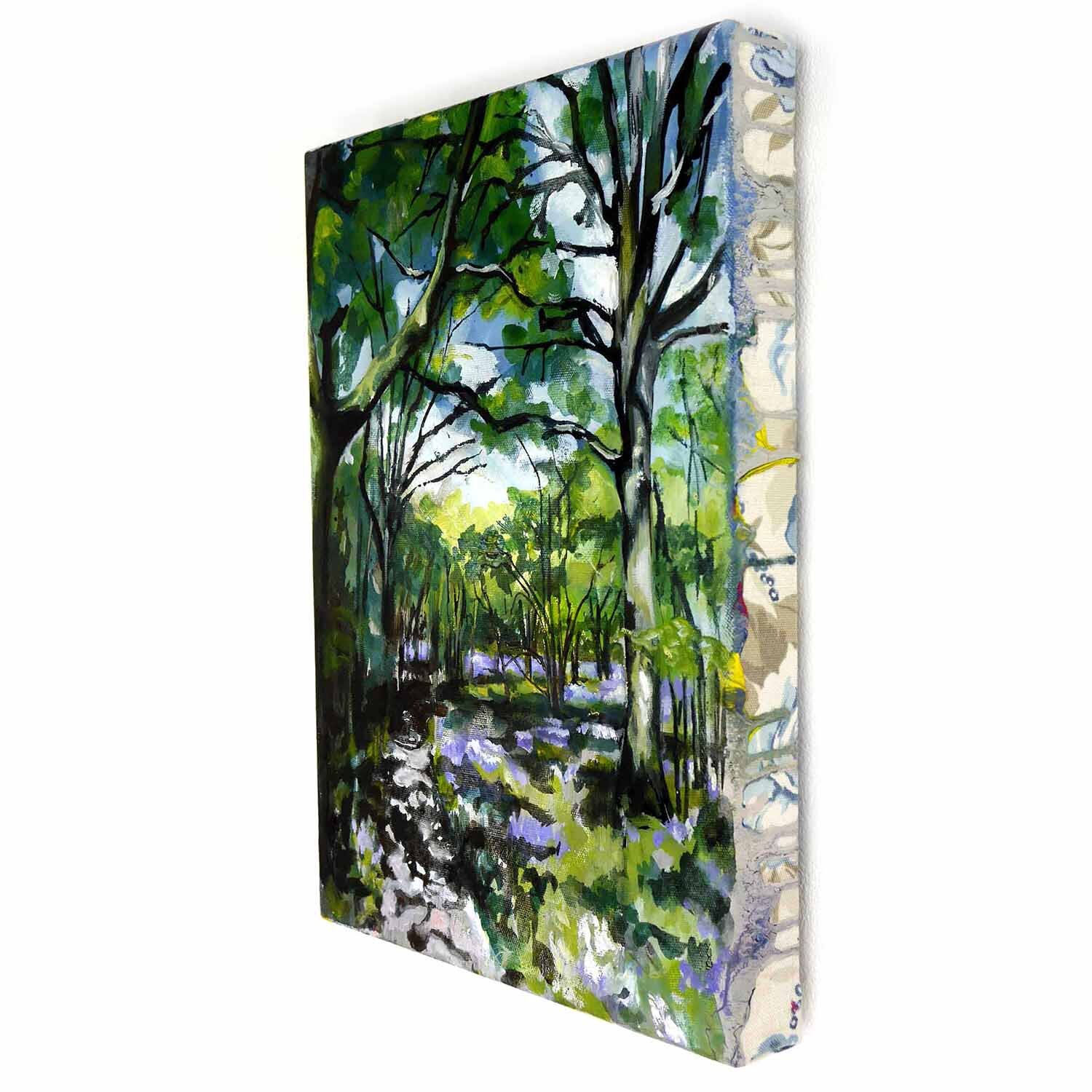The Work:
Sarah Whiteley is an artist based in Sussex, the landscape and rich tradition of the Arts and Crafts movement in this area has determined her practice. Sarah’s art has always evoked and documented journeys, through continents, landscapes and now woodland. In this latest series, there is a tension between the domestic and the wild; pushing forward an expanded notion of what painting can and could be, in Sarah’s work, she reimagines the painting as an object by using materials with their own history and context.
The paintings arise from our shared relationship with woods and forests throughout the year, watching the different seasons play out in colour and light. The wood evolves; brings life and decay in a cyclical process which is echoed in our own lives. Each painting captures a moment in a specific place but as a series they also record the passage of time. Returning to the same places means Sarah observes the physical changes of the wood and also reflects on personal events through the year; the paintings bridge and create a conversation with the passing of time. The ‘Patchwork’ series are paintings of Sarah’s photographs and experiences of woodlands. These often have historical significance such as Petworth Park which was designed by Capability Brown to locations of personal importance around Christs Hospital where Sarah would walk with her children. These same woods have been visited by people for generations and are therefore woven into other people’s personal narratives and routines. The work references theories of memory; the paintings allude to the everyday domestic life and the cyclical nature of the year or a day. Through the subject matter and the choice of materials the paintings touch on the idea of ‘folk memory’; how stories, myths and the spaces our ancestors lived in have informed our sense of belonging. While these paintings reference specific moments, they also emphasise the collective experience of nature and the inevitability of time.
The unique canvases are created from collaged antique fabric which gives the paintings their domestic narrative. Each fabric element is from a different period of time and has been used for different purposes within the home, for example as upholstery fabric on an arm chair or nursery curtains. These fabrics and patterns have a functional use within the home for long periods of time and become part of every day routines, therefore the fabrics contain different personal and social contexts. In the early paintings the fabric can only be seen on the sides of the canvases, playing with the idea of revealing what is behind the painting. Gradually the fabric’s patterns and colours have been incorporated into the image, underlining the importance of those layers of fabric and the different types of household and oil paint in the work. The canvases play with the idea of placing domestic and traditionally ‘homely’ or maternal elements together', while the painted element interrupts and defaces these fabrics with images of nature and the wild. These elements seem opposed to each other however they both reference the inevitability of the passing of time. The selection of often floral fabrics is also interesting in the work as this questions our collective relationship with nature and our desire for control. The prints are made from a selection of ripped and cut wallpapers. The pattern and texture of the wallpaper is integral to the image and the illusion of the woodland landscape.
Forests and woodlands are often the backdrop to children’s and adult stories, fantasies and imaginations. Each painting’s title is a quote taken from children’s literature. Intrinsic fear and curiosity of the woods has become entwined in our imaginations, nursery rhymes and folk tales. The forest is a reflection of our subconscious, they are wild, forbidden, dangerous and exciting. Psychologists have interpreted such symbols as an expression of the unconscious. The journey into the forest is a metaphorical journey into our unconscious selves.
These landscapes expose themselves; they bring together different narratives through the fabric and seductive painted surface which reveal and conceal different details. Although incredibly personal, these paintings allude to our shared experience of forests and depict the rhythm of life over time.








